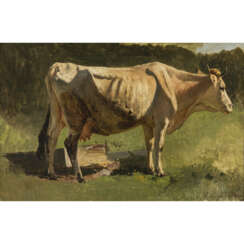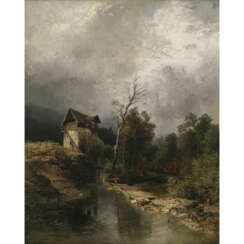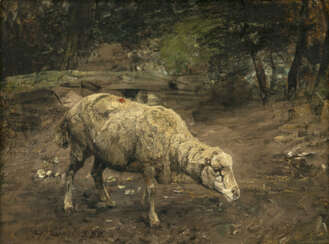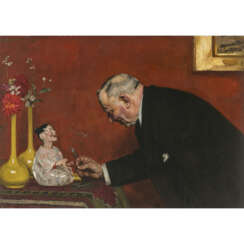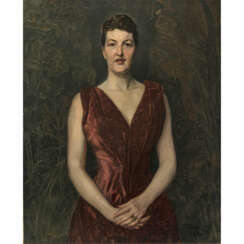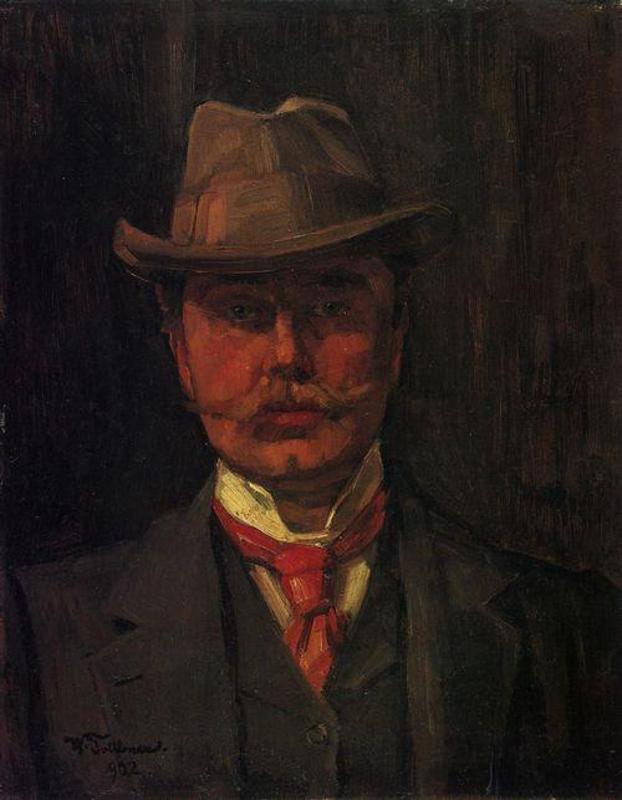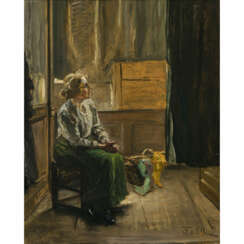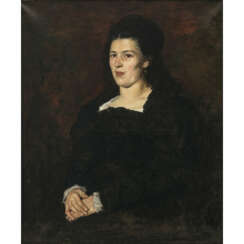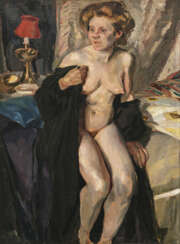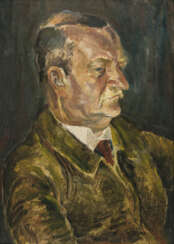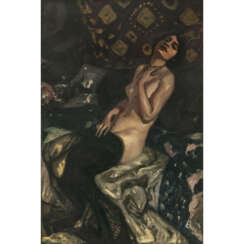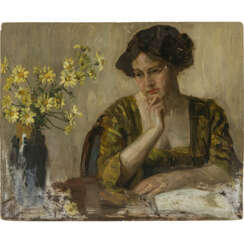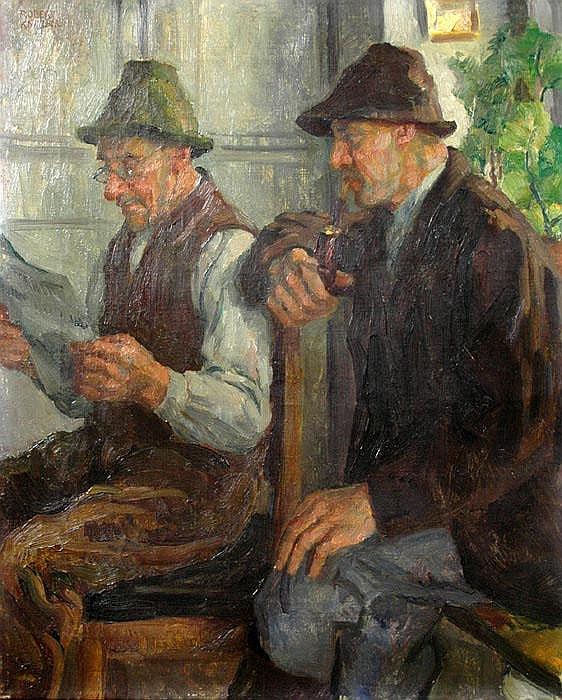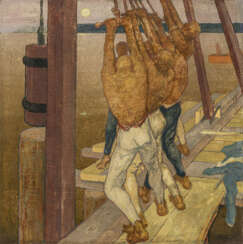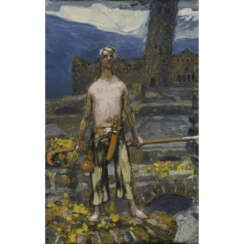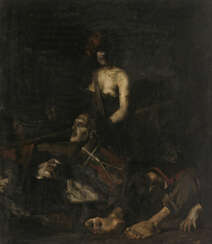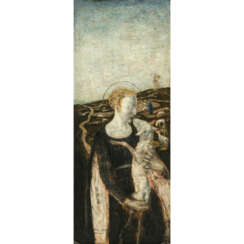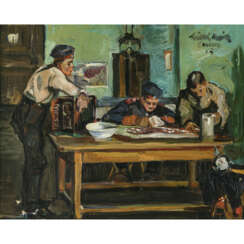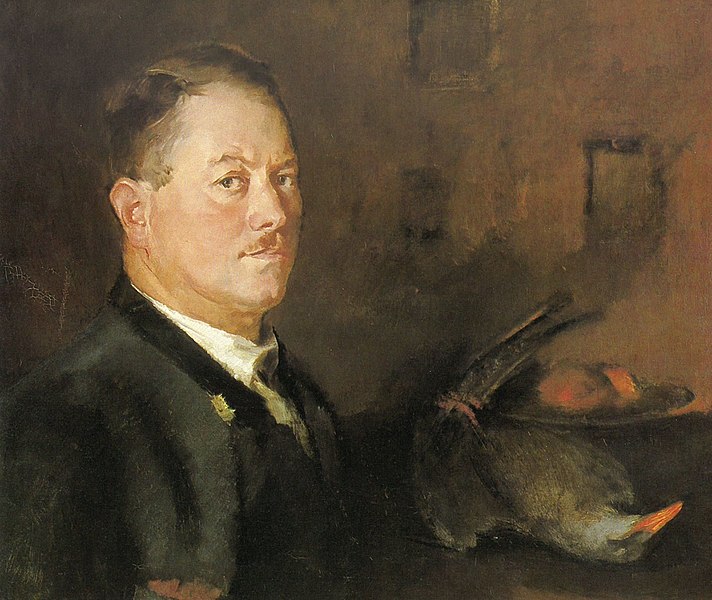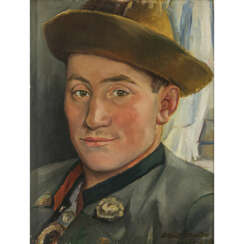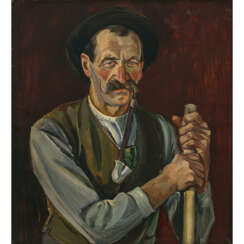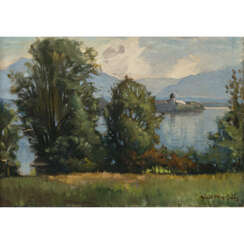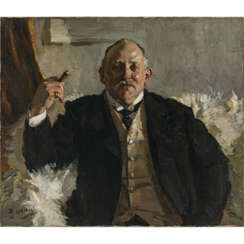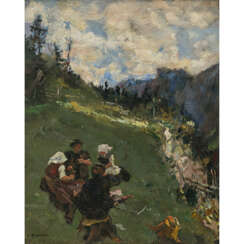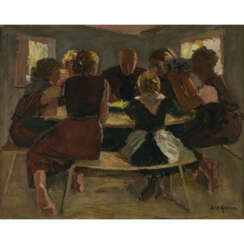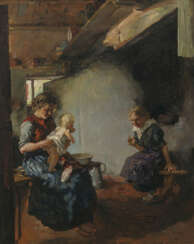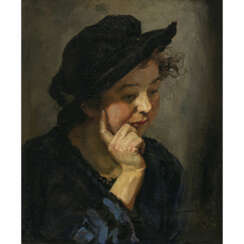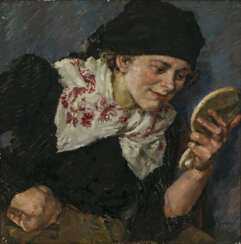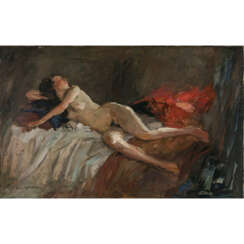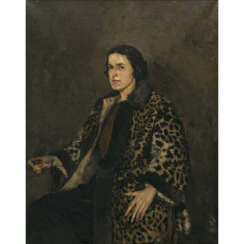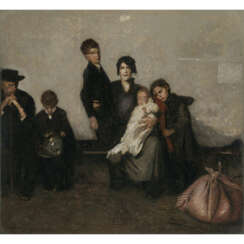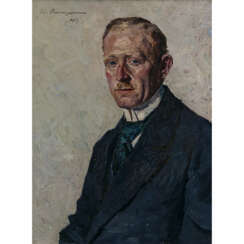
Paintings 19th - 20th century — Sonderauktion Sammlung Faussner
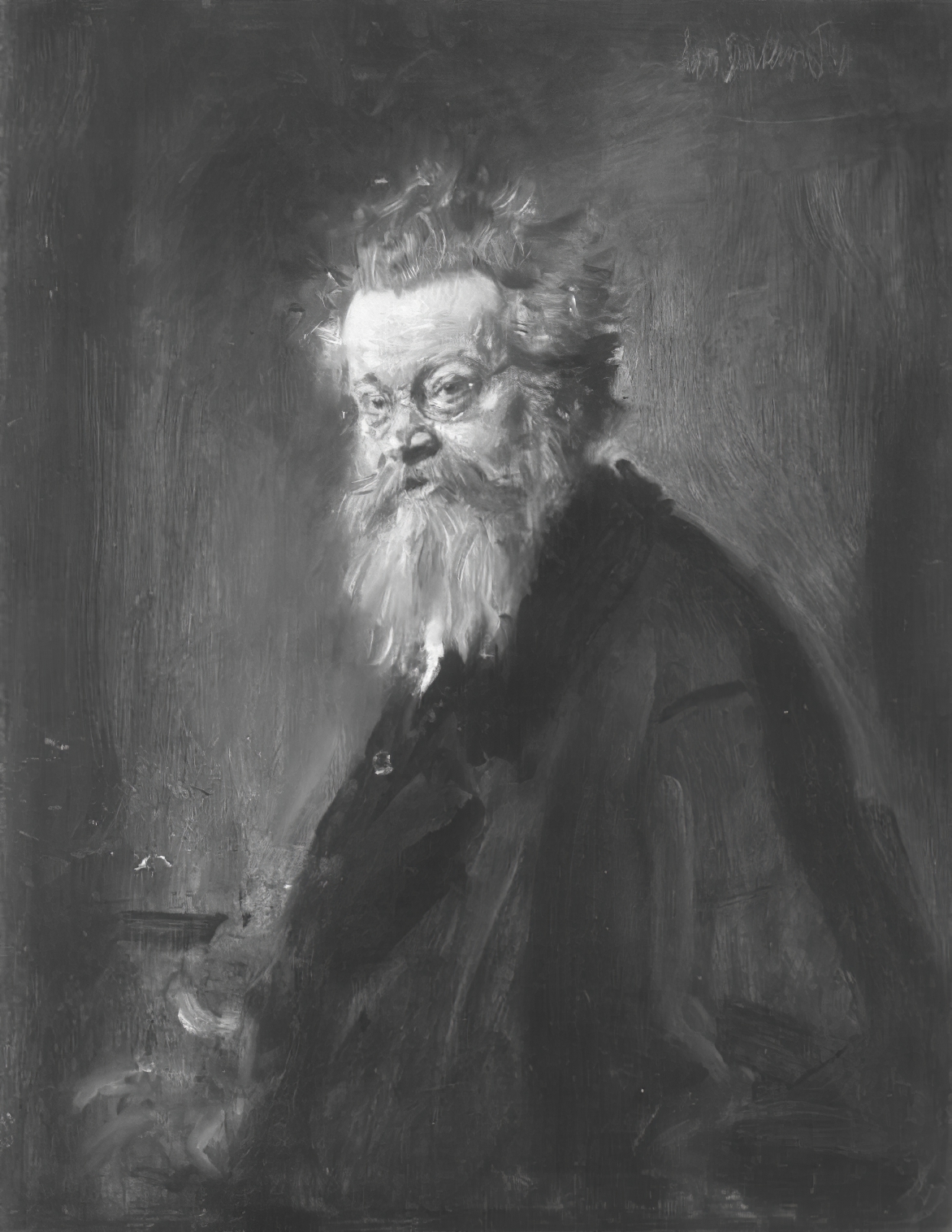
Joseph Wenglein was a German painter who is often referred to as one of the last significant landscape painters of the 19th century Munich school.
Parallel to his law studies Joseph Wenglein studied at the Academy of Fine Arts in Munich. He then switched entirely to art and became a pupil of the landscape painter Johann Gottfried Steffan. On his recommendation, Wenglein sometime later became a pupil of the painter Adolf Heinrich Lier, whose colouristic tendencies, calculated to express profound moods, particularly appealed to him.
Josef Wenglein knew how to reproduce the change of daylight, especially in spring and autumn, with a fine sense of the slightest atmospheric fluctuations and to vary the grey pleasant tone of the Bavarian plateau in all its nuances masterfully.

Joseph Wenglein was a German painter who is often referred to as one of the last significant landscape painters of the 19th century Munich school.
Parallel to his law studies Joseph Wenglein studied at the Academy of Fine Arts in Munich. He then switched entirely to art and became a pupil of the landscape painter Johann Gottfried Steffan. On his recommendation, Wenglein sometime later became a pupil of the painter Adolf Heinrich Lier, whose colouristic tendencies, calculated to express profound moods, particularly appealed to him.
Josef Wenglein knew how to reproduce the change of daylight, especially in spring and autumn, with a fine sense of the slightest atmospheric fluctuations and to vary the grey pleasant tone of the Bavarian plateau in all its nuances masterfully.
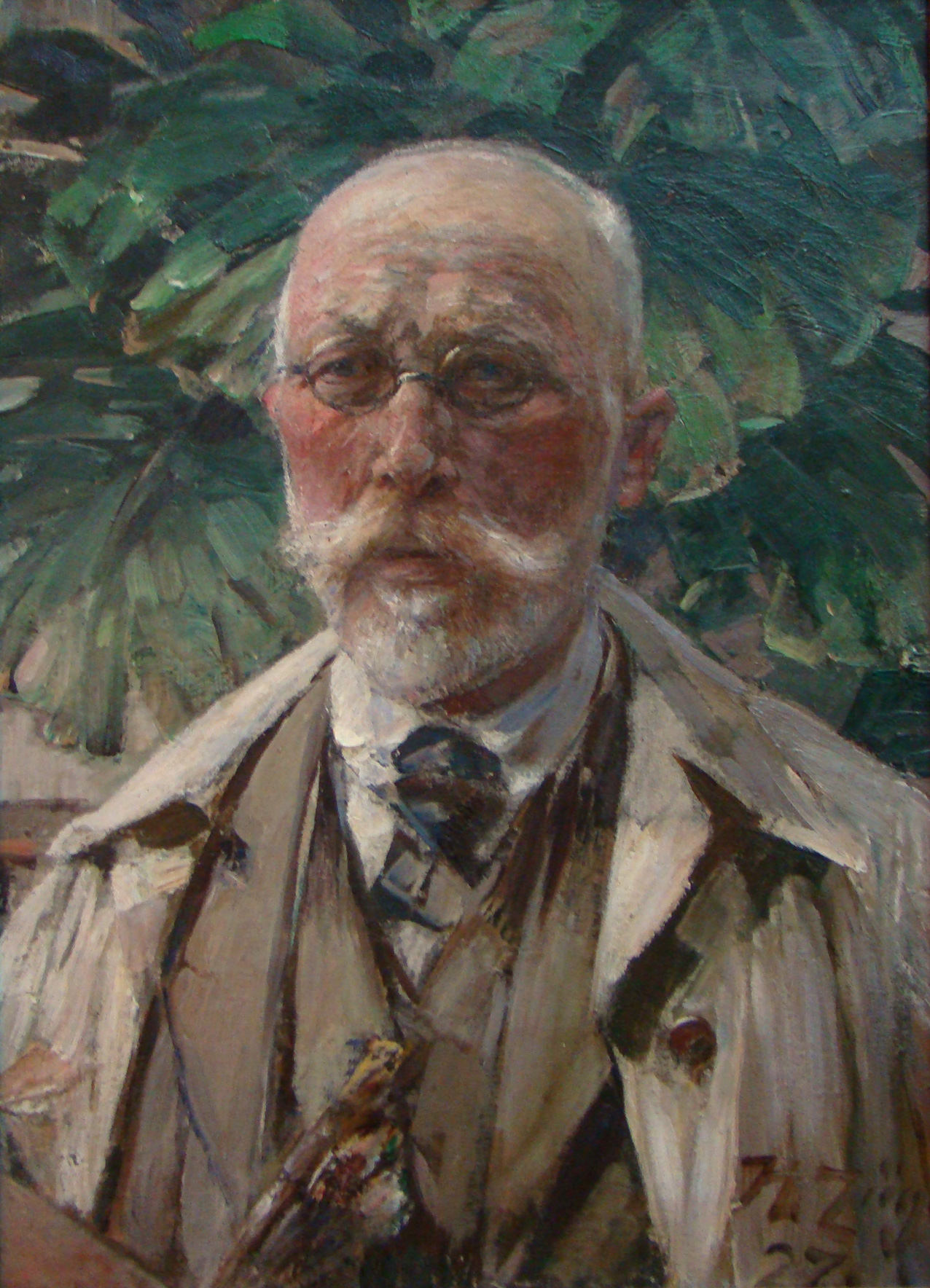
Heinrich Johann von Zügel was a German painter of the late nineteenth century and the first half of the twentieth century. He is known as a painter who specialized in depicting farm animals in dramatic and humorous situations.
Von Zügel invested more than 40 years in the subject of "Hard Labor," depicting mostly the work of oxen. By creating 24 versions of this subject, the artist demonstrated the evolution of his skill from realistic detailing to cubic and monumental interpretation. Von Zügel also created light impressionist paintings, including a self-portrait at the age of 77. In addition to animals, he also painted portraits and cityscapes.

Heinrich Johann von Zügel was a German painter of the late nineteenth century and the first half of the twentieth century. He is known as a painter who specialized in depicting farm animals in dramatic and humorous situations.
Von Zügel invested more than 40 years in the subject of "Hard Labor," depicting mostly the work of oxen. By creating 24 versions of this subject, the artist demonstrated the evolution of his skill from realistic detailing to cubic and monumental interpretation. Von Zügel also created light impressionist paintings, including a self-portrait at the age of 77. In addition to animals, he also painted portraits and cityscapes.
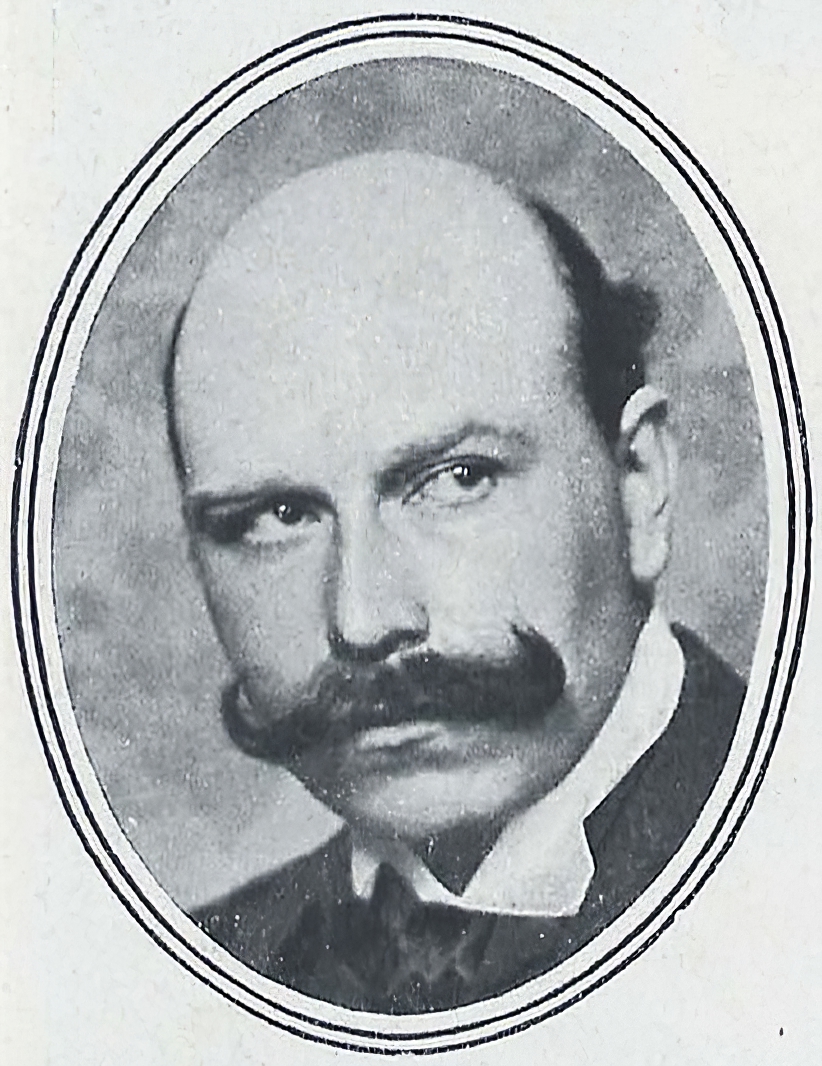
Arthur Kampf was a German painter. He was associated with the Düsseldorf school of painting.
Kampf's work is most strongly associated with the genre of traditional history painting, though throughout his lifetime he explored styles influenced by Impressionism and Art Nouveau. He was also celebrated for large scale portrait work and in particular children's portraiture. Kampf also worked extensively as an illustrator, contributing drawings to volumes by Shakespeare (1925), R. Herzog, History of Prussia (1913) and J.W. Goethe, Faust (1925). Kampf's artwork post World War II largely focused on religious themes.
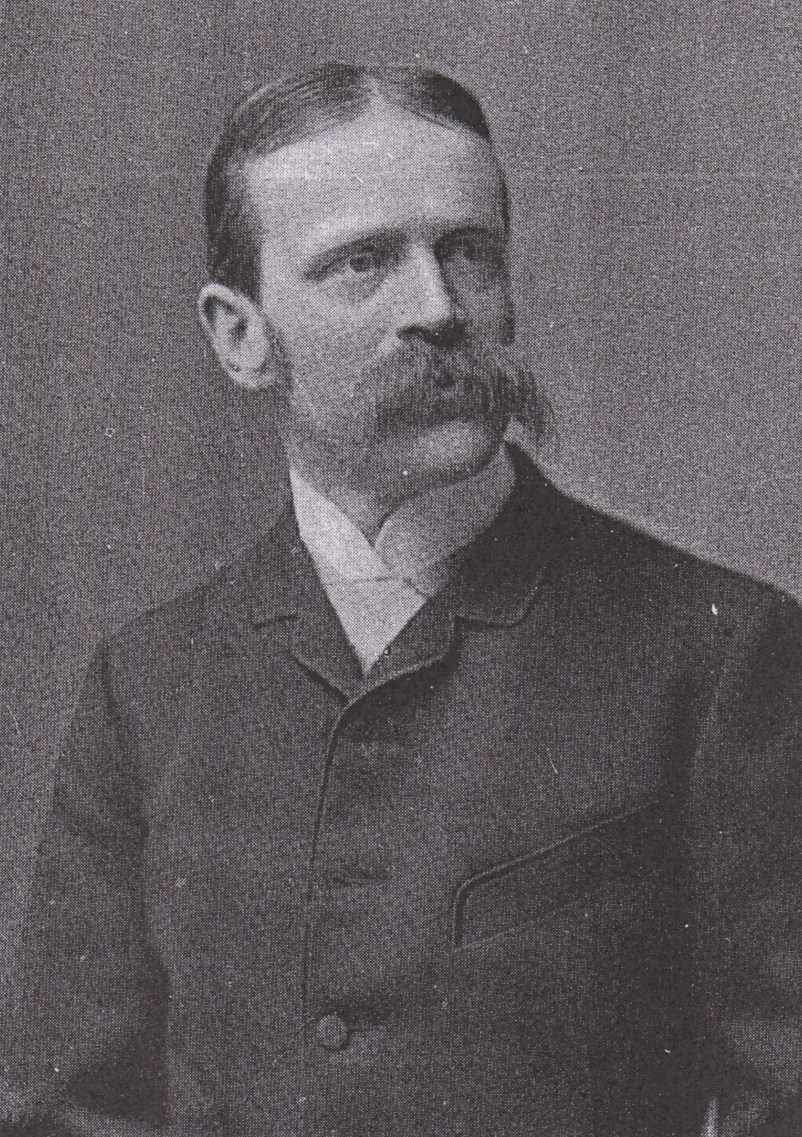
Fritz von Uhde was a German painter of the last third of the 19th and early 20th centuries. He is known as a religious and genre painter, who combined realism and impressionism in his work.
Von Uhde, creating genre and religious paintings, sought to connect the New Testament with modernity, depicting as characters representatives of the lower strata of the population. He is considered the forerunner of modern church art. Critics and the public often dismissed his work for being "vulgar," but admirers compared his style to Rembrandt for its naturalness and connection to life.
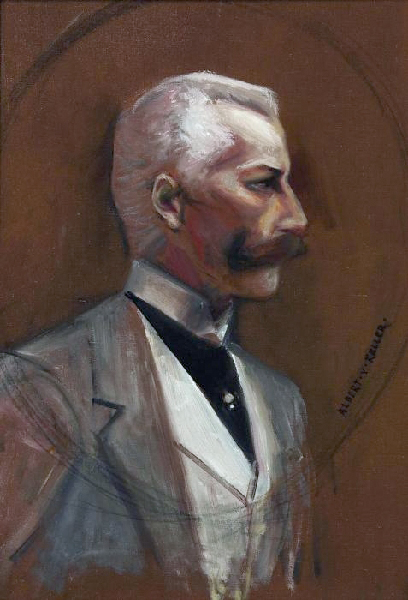
Albert von Keller was a German painter of Swiss ancestry, best known for his indoor scenes and portraits featuring female figures. Born on April 27, 1844, in Gais, Switzerland, he began his career by studying law at Ludwig Maximilian University, but his passion for art led him to the Academy of Fine Arts in Munich. His art journey took him through France and Italy, honing his style through various studio experiences.
Von Keller is recognized for his portraits depicting women in indoor environments, often shown in striking poses or engaging in activities. His later works took on supernatural, mystical, or religious themes. One of his notable achievements was co-founding the Munich Secession in 1892, where he served as vice president from 1904 to 1920.
Several of his works are housed in museums and galleries, such as "Irene von Keller with her son Balthasar" (1888), "The Pianist," and "Chopin" (1873). He also received the Knight's Cross of the Order of the Merit of the Bavarian Crown in 1878.
For collectors and art enthusiasts interested in learning more about Albert von Keller and his work, consider subscribing to updates to stay informed about new product sales and auction events related to this artist. These updates will help you track his artworks and any upcoming exhibitions.
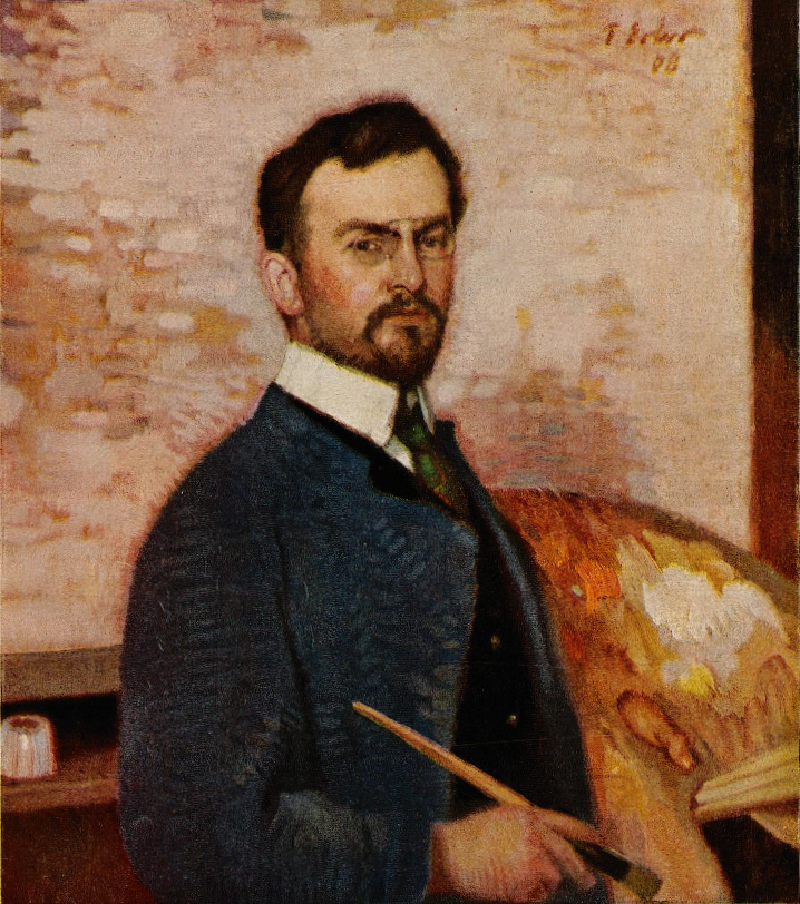
Fritz Erler was a German painter, graphic designer and scenic designer. Although most talented as an interior designer, he is perhaps best remembered for several propaganda posters he produced during World War I.
During the National Socialist period Erler's portraits of Adolf Hitler, Franz von Epp, and Wilhelm Frick were very remunerative.

Fritz Erler was a German painter, graphic designer and scenic designer. Although most talented as an interior designer, he is perhaps best remembered for several propaganda posters he produced during World War I.
During the National Socialist period Erler's portraits of Adolf Hitler, Franz von Epp, and Wilhelm Frick were very remunerative.
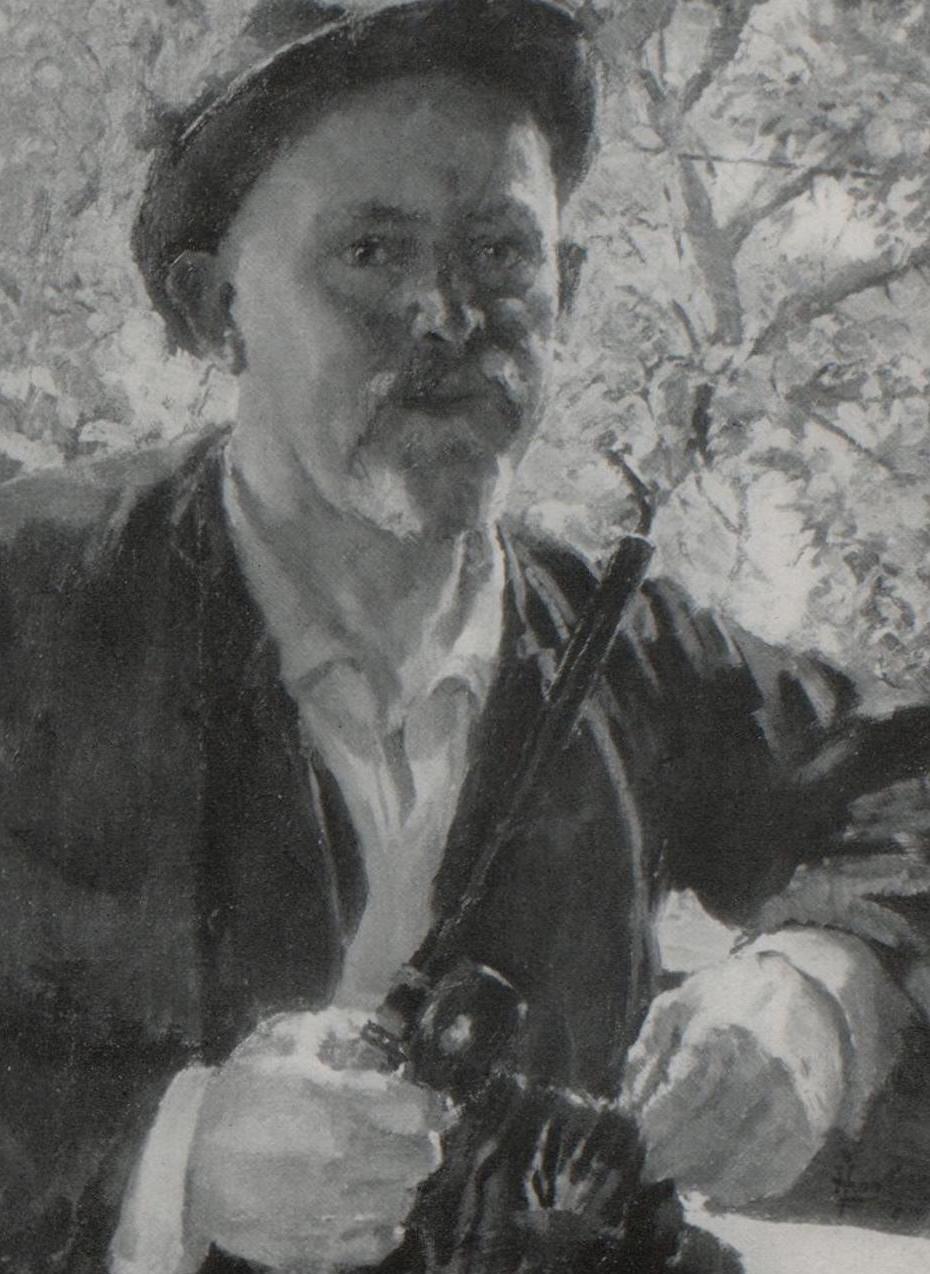
Hermann Groeber was a German painter who was known throughout Germany as a portraitist and landscape artist.
Hermann Groeber gained early success as a self-employed painter. He joined the German Association of Artists, and after Ludwig Schmid-Reutte was appointed to Karlsruhe, Groeber took over his class of nude acts, which soon enjoyed great popularity.

Hermann Groeber was a German painter who was known throughout Germany as a portraitist and landscape artist.
Hermann Groeber gained early success as a self-employed painter. He joined the German Association of Artists, and after Ludwig Schmid-Reutte was appointed to Karlsruhe, Groeber took over his class of nude acts, which soon enjoyed great popularity.

Hermann Groeber was a German painter who was known throughout Germany as a portraitist and landscape artist.
Hermann Groeber gained early success as a self-employed painter. He joined the German Association of Artists, and after Ludwig Schmid-Reutte was appointed to Karlsruhe, Groeber took over his class of nude acts, which soon enjoyed great popularity.

Hermann Groeber was a German painter who was known throughout Germany as a portraitist and landscape artist.
Hermann Groeber gained early success as a self-employed painter. He joined the German Association of Artists, and after Ludwig Schmid-Reutte was appointed to Karlsruhe, Groeber took over his class of nude acts, which soon enjoyed great popularity.

Hermann Groeber was a German painter who was known throughout Germany as a portraitist and landscape artist.
Hermann Groeber gained early success as a self-employed painter. He joined the German Association of Artists, and after Ludwig Schmid-Reutte was appointed to Karlsruhe, Groeber took over his class of nude acts, which soon enjoyed great popularity.

Hermann Groeber was a German painter who was known throughout Germany as a portraitist and landscape artist.
Hermann Groeber gained early success as a self-employed painter. He joined the German Association of Artists, and after Ludwig Schmid-Reutte was appointed to Karlsruhe, Groeber took over his class of nude acts, which soon enjoyed great popularity.

Hermann Groeber was a German painter who was known throughout Germany as a portraitist and landscape artist.
Hermann Groeber gained early success as a self-employed painter. He joined the German Association of Artists, and after Ludwig Schmid-Reutte was appointed to Karlsruhe, Groeber took over his class of nude acts, which soon enjoyed great popularity.
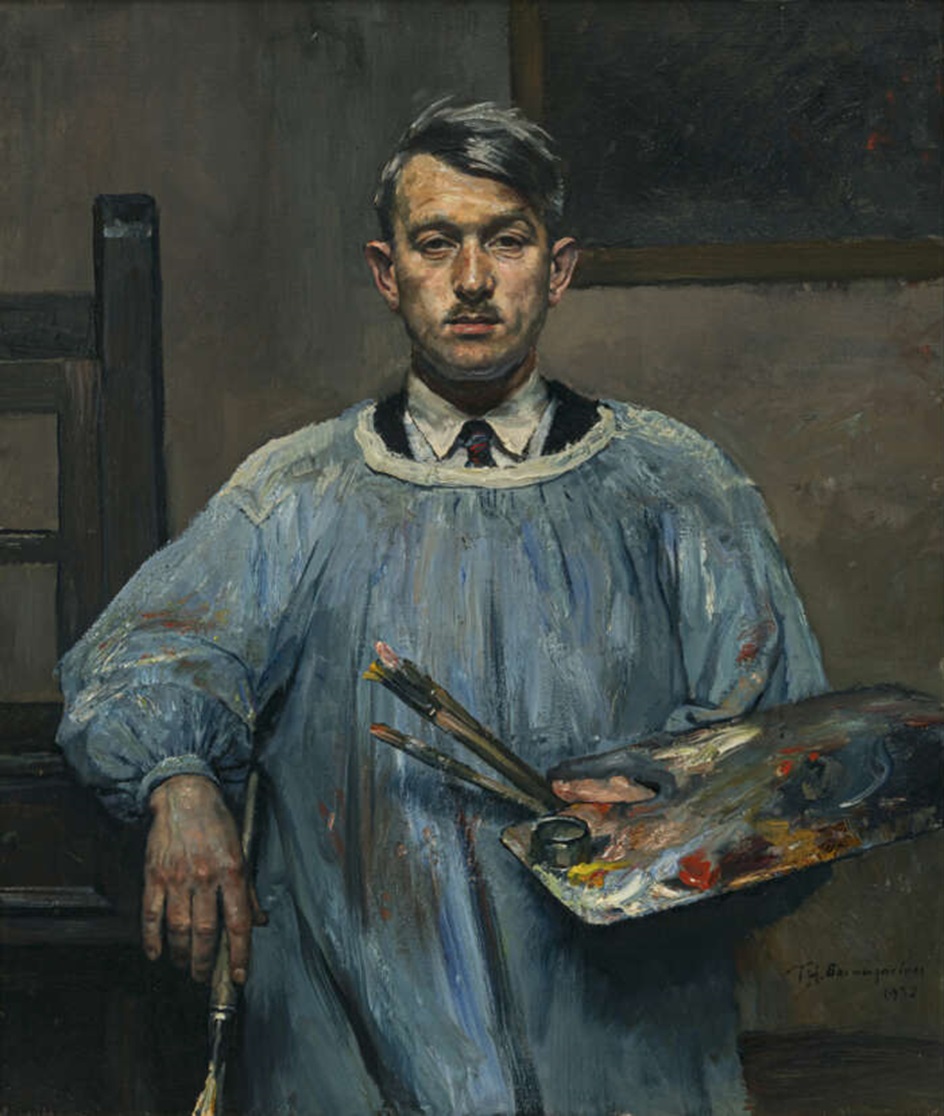
Thomas Baumgartner was a German painter, recognized for his evocative portrayals of rural life. Born in Munich in 1892, he was celebrated for his detailed and vibrant depictions of Bavarian customs and countryside, earning him a place among notable 20th-century German painters.
After training at the Munich Academy and various travels in Europe, Baumgartner established himself with a distinctive style that blended traditional Bavarian influences with his unique artistic vision. His works often featured robust, earthy scenes of peasant life, which not only showcased his technical skill but also conveyed a deep affection for his homeland's landscapes and customs.
Throughout his career, Baumgartner's paintings were widely exhibited and appreciated, particularly for their craftsmanship and the way they captured the essence of rural Germany. His art is a testament to the cultural heritage of Bavaria, resonating with those who value the preservation of regional histories and lifestyles.
Baumgartner's legacy is preserved in art collections and has been featured in major exhibitions, often commanding attention in both national and international art circles. His dedication to depicting the simplicity and beauty of peasant life helps keep the rural traditions of Germany alive in the collective memory of the art world.
For those interested in exploring the serene beauty of traditional German art, Thomas Baumgartner's works offer a timeless journey into the heart of Bavaria's countryside and culture.
To stay updated on upcoming sales and auctions featuring the works of Thomas Baumgartner, consider signing up for our newsletter. This subscription will keep you informed about new opportunities to acquire pieces from this remarkable artist's legacy.

Thomas Baumgartner was a German painter, recognized for his evocative portrayals of rural life. Born in Munich in 1892, he was celebrated for his detailed and vibrant depictions of Bavarian customs and countryside, earning him a place among notable 20th-century German painters.
After training at the Munich Academy and various travels in Europe, Baumgartner established himself with a distinctive style that blended traditional Bavarian influences with his unique artistic vision. His works often featured robust, earthy scenes of peasant life, which not only showcased his technical skill but also conveyed a deep affection for his homeland's landscapes and customs.
Throughout his career, Baumgartner's paintings were widely exhibited and appreciated, particularly for their craftsmanship and the way they captured the essence of rural Germany. His art is a testament to the cultural heritage of Bavaria, resonating with those who value the preservation of regional histories and lifestyles.
Baumgartner's legacy is preserved in art collections and has been featured in major exhibitions, often commanding attention in both national and international art circles. His dedication to depicting the simplicity and beauty of peasant life helps keep the rural traditions of Germany alive in the collective memory of the art world.
For those interested in exploring the serene beauty of traditional German art, Thomas Baumgartner's works offer a timeless journey into the heart of Bavaria's countryside and culture.
To stay updated on upcoming sales and auctions featuring the works of Thomas Baumgartner, consider signing up for our newsletter. This subscription will keep you informed about new opportunities to acquire pieces from this remarkable artist's legacy.

Thomas Baumgartner was a German painter, recognized for his evocative portrayals of rural life. Born in Munich in 1892, he was celebrated for his detailed and vibrant depictions of Bavarian customs and countryside, earning him a place among notable 20th-century German painters.
After training at the Munich Academy and various travels in Europe, Baumgartner established himself with a distinctive style that blended traditional Bavarian influences with his unique artistic vision. His works often featured robust, earthy scenes of peasant life, which not only showcased his technical skill but also conveyed a deep affection for his homeland's landscapes and customs.
Throughout his career, Baumgartner's paintings were widely exhibited and appreciated, particularly for their craftsmanship and the way they captured the essence of rural Germany. His art is a testament to the cultural heritage of Bavaria, resonating with those who value the preservation of regional histories and lifestyles.
Baumgartner's legacy is preserved in art collections and has been featured in major exhibitions, often commanding attention in both national and international art circles. His dedication to depicting the simplicity and beauty of peasant life helps keep the rural traditions of Germany alive in the collective memory of the art world.
For those interested in exploring the serene beauty of traditional German art, Thomas Baumgartner's works offer a timeless journey into the heart of Bavaria's countryside and culture.
To stay updated on upcoming sales and auctions featuring the works of Thomas Baumgartner, consider signing up for our newsletter. This subscription will keep you informed about new opportunities to acquire pieces from this remarkable artist's legacy.
